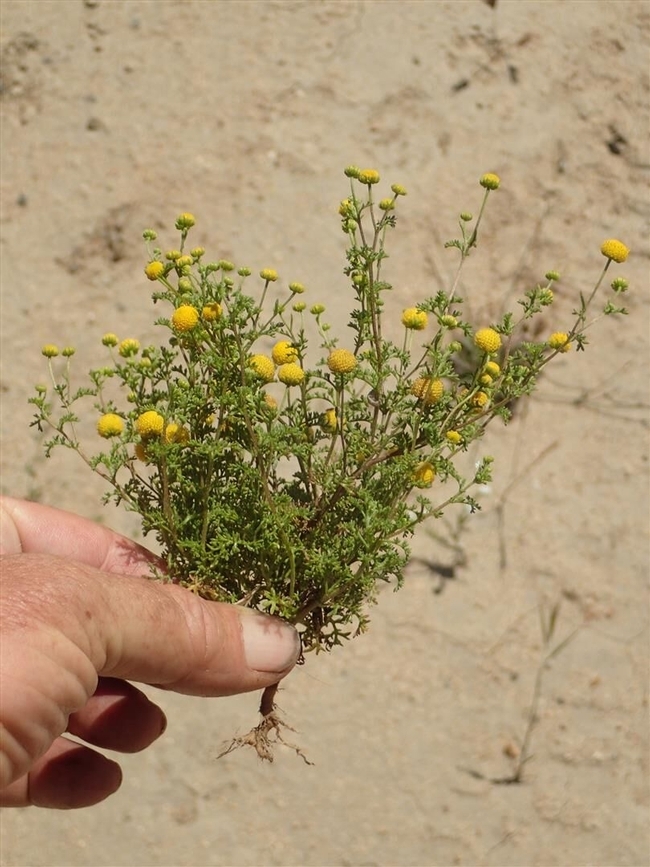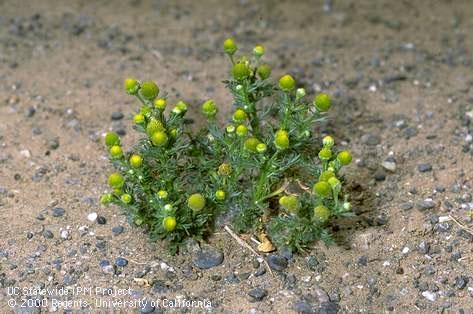I recently attended a Santa Ana River Orange County Weed Management Area (SAROCWMA) meeting and there was an opportunity for participants to update the group about new invasive plants as well as give an update on management of these and others. During the discussion, Ron Vanderhoff from the Orange County Native Plant Society (OC-CNPS), reported new findings of a plant I'd never heard of. In fact, when the group was talking about it, I wasn't sure if I heard the name right.

The plant is called stinknet (Oncosiphon piluliferum), which to me sounds like a game played by 10 year olds. However, the California Invasive Plant Council considers it an emerging invasive weed (http://www.occnps.org/PDF/HYS-Oncosiphon-piluliferum.pdf). On the OC-CNPS weedmapper, it was first reported in Orange County in 2003, but was in San Diego County as early as 1998 and Riverside County in 1981.
According to the USDA-NRCS plants database, stinknet has a limited distribution in the U.S., being found only in Orange, Riverside, and San Diego Counties in California and Maricopa, Pinal, and Yavapai Counties in Arizona. However, Cal-Flora has unconfirmed sightings of it in San Bernardino, Imperial, and Kern Counties.
Stinknet or globe chamomile is a relatively small annual plant that could easily be confused with the turf and landscape weed pineappleweed until you smell it. Pineappleweed flowers have a pleasant sweet smell while, as you may guess from the name, stinknet has the opposite odor. It is most noticeable when flowering (March to July in Southern California) so now is a good time to spot it.
Although it is not listed as a noxious weed, land managers should still be on the lookout for it especially along the coast and inland. It can be particularly damaging in coastal sage scrub because of its tendency to fill in open spaces, and it can reduce growth of other native annuals and impact animals that depend on the openings in these areas.